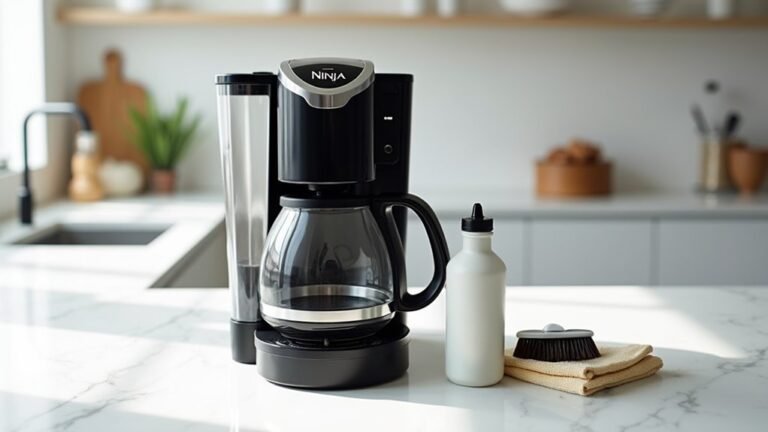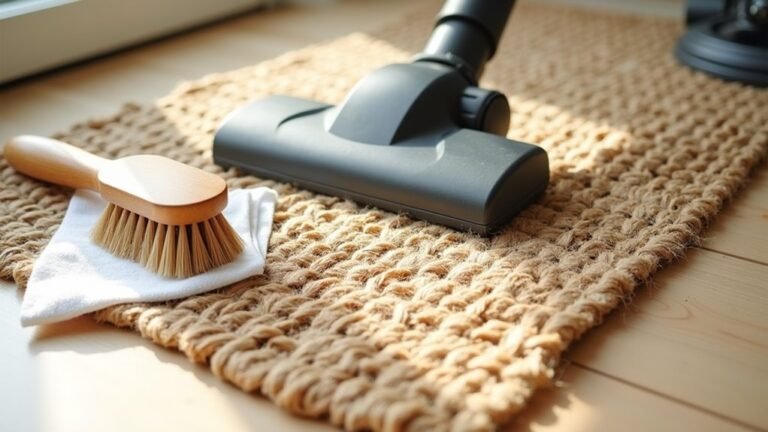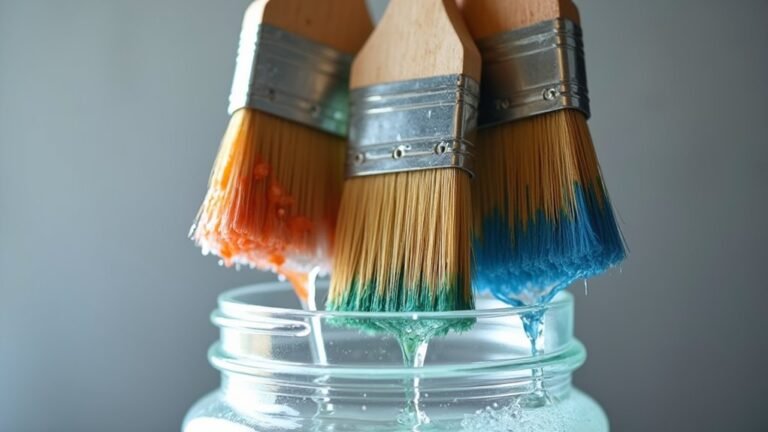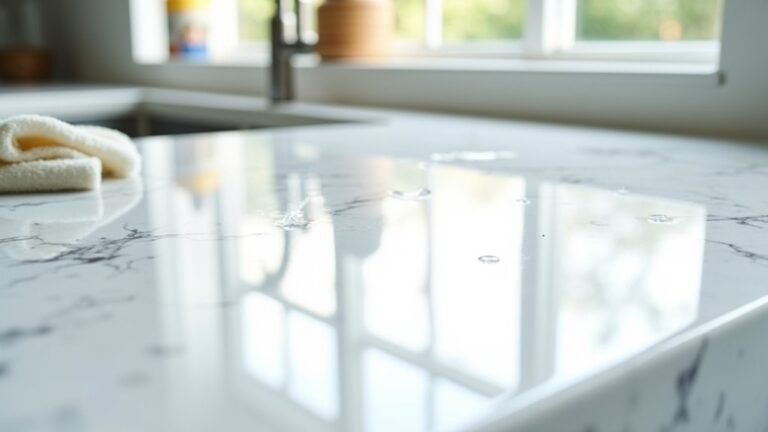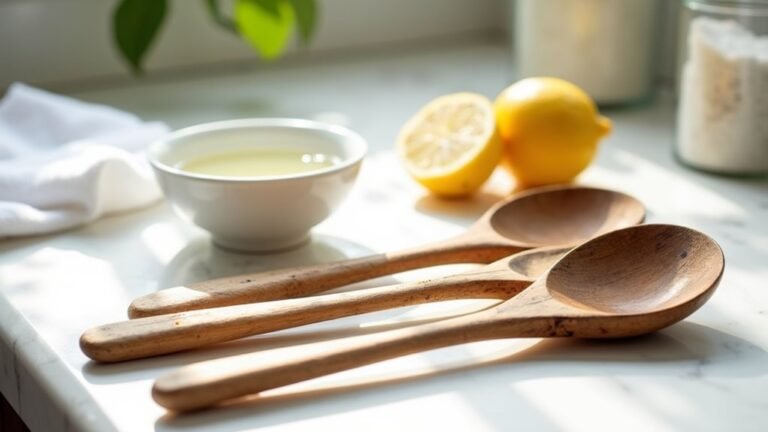Keeping your wood cabinets clean is a big deal, especially after seeing how much dust and dirt they can collect. From sticky kid fingerprints to cooking grease, there’s always something making our cabinets look dull and dirty. But don’t worry – cleaning them doesn’t have to be hard, and you won’t damage your cabinets if you do it right.
According to Bob Vila, home improvement expert and former host of “This Old House”: “Regular cleaning of wood cabinets is essential to prevent buildup that can eventually damage the finish. A simple solution of dish soap and warm water is often all you need for basic cleaning.”
Whether you have brand new cabinets or older wooden ones passed down through your family, using the right cleaning methods will keep them looking fresh and protect them for many years. Let’s learn the basic steps to keep those cabinets sparkling clean and in great shape.
Kitchen Cabinet Maintenance Basics

Whether your kitchen cabinets are brand new or well-loved, proper maintenance is essential for keeping them looking their best.
Regular cabinet care keeps your kitchen investment pristine, whether you just installed them or they’ve served you for years.
We recommend weekly cleaning with warm water and gentle soap to prevent grease buildup.
For deep cleaning, we trust Murphy’s Oil Soap to tackle tough stains.
Don’t forget to maintain a protective barrier by applying a mixture of vegetable oil and vinegar using a soft microfiber cloth.
Let’s look at the essential aspects of cleaning wood cabinets, from helpful techniques to things you’ll want to avoid.
We’ll cover step-by-step instructions that make cabinet cleaning easier and more effective, along with common mistakes that could damage your cabinets’ finish.
Whether you’re dealing with everyday grime or stubborn stains, we’ll guide you through the best practices and precautions to keep your wood cabinets looking beautiful for years to come.
Things to Do When Cleaning Wood Cabinets
When cleaning wood cabinets, it’s important to approach the task methodically to protect the finish while effectively removing dirt and grime. Proper cleaning not only maintains the cabinets’ appearance but also extends their lifespan by preventing damage from harsh chemicals or improper techniques that could compromise the wood’s integrity.
- Identify cabinet finish – Examine whether your cabinets have a natural, painted, or laminate finish to choose appropriate cleaning products.
- Test cleaning solution – Apply your chosen cleaner to a hidden spot to verify it won’t damage or discolor the surface.
- Remove hardware – Take off handles, knobs, and other attachments to clean thoroughly around these areas.
- Dust surfaces – Wipe down cabinets with a dry microfiber cloth to remove loose debris.
- Prepare cleaning solution – Mix mild soap with warm water or create a vinegar-salt paste for tougher stains.
- Clean systematically – Work from top to bottom, using gentle circular motions with a soft cloth.
- Address problem areas – Use a soft-bristled toothbrush for corners and detailed areas.
- Rinse surfaces – Wipe with a clean, damp cloth to remove soap residue.
- Dry thoroughly – Use a clean, dry cloth to prevent water damage.
- Polish and protect – Apply wood polish or protective coating if recommended for your cabinet type.
Things to Avoid When Cleaning Wood Cabinets
When cleaning wood cabinets, it’s essential to protect their finish and structural integrity by using appropriate cleaning methods and products.
Improper cleaning techniques can lead to permanent damage, affecting both the appearance and longevity of your cabinets, potentially resulting in costly repairs or replacements.
- Harsh chemicals and abrasive cleaners – These can strip protective finishes and create scratches in the wood surface.
- Steel wool and rough scrubbing tools – Can leave permanent scratches and damage the cabinet’s smooth finish.
- Excessive water or cleaning solutions – Can seep into wood grain causing warping, swelling, and structural damage.
- Undiluted vinegar and acidic cleaners – Will deteriorate paint and protective finishes over time.
- Generic all-purpose cleaners – May contain ingredients that damage wood while ineffectively removing grease.
- Soaking cleaning cloths – Prolonged moisture contact can lead to water damage and wood deterioration.
- Steam cleaning – The intense heat and moisture can cause wood expansion and finish damage.
- Bleach-based products – Can discolor wood and break down protective sealants.
Steps
Cleaning wood cabinets requires a methodical approach to effectively remove grease, grime, and everyday dirt while protecting the wood’s finish.
Using the right cleaning solution and tools, combined with proper technique, guarantees your cabinets stay beautiful and well-maintained without damaging the wood surface.
Step 1: Mix a cleaning solution of warm water and Murphy Oil Soap according to product instructions.
Step 2: Dip a soft cloth or sponge into the solution, wringing out excess water.
Step 3: Clean cabinet surfaces systematically, working from top to bottom.
Step 4: Use a toothbrush to scrub around handles, hardware, and detailed areas.
Step 5: Wipe down cabinet doors, drawer fronts, and all exposed surfaces.
Step 6: Rinse surfaces with a clean, damp cloth to remove soap residue.
Step 7: Dry all surfaces thoroughly with a clean towel.
Step 8: Repeat process for heavily soiled areas if needed.
Final Thoughts
Although maintaining wood cabinets requires consistent effort, the rewards of having beautiful, long-lasting cabinetry make it well worth the time invested.
By regularly cleaning with gentle soap solutions or Murphy’s Oil Soap, removing stubborn grease with vinegar, and creating a protective barrier through maintenance, we’ll keep our wood cabinets looking their best.
Remember to always test new cleaning products first for the safest results.
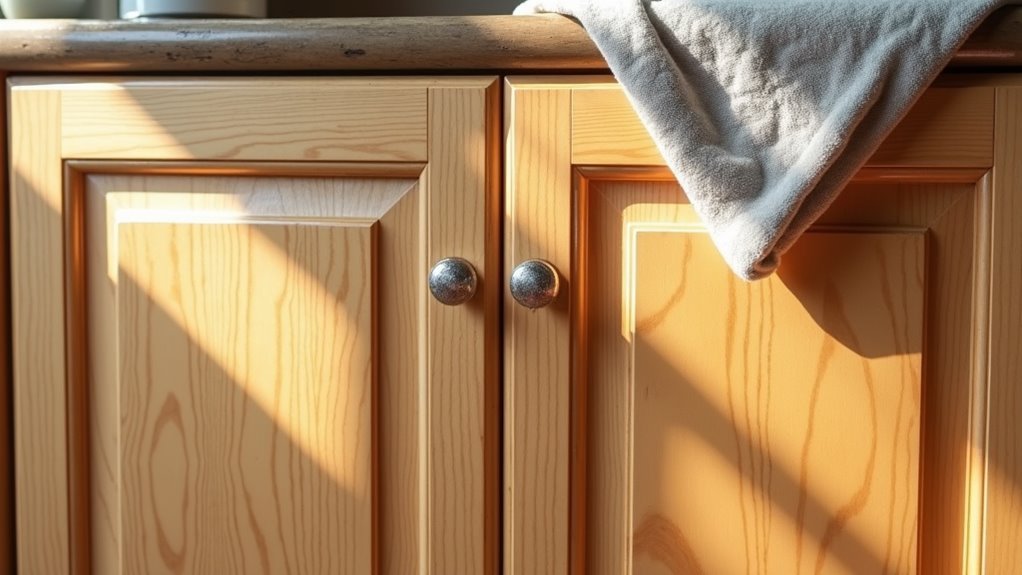
Keeping wood cabinets clean doesn’t have to be an intimidating task when you follow a consistent maintenance routine.
Regular weekly cleaning with gentle products like Dawn dish soap prevents tough buildup and preserves the wood’s natural beauty. By testing cleaning solutions first and using non-abrasive methods, you can safely remove stains without damaging the finish. Adding a protective layer of oil and vinegar creates lasting protection against future messes. Establishing a regular cleaning routine is essential for maintaining aesthetics and longevity of your cabinets.
Take action today by establishing a simple cleaning schedule for your cabinets. Start with basic cleaning supplies you likely already have at home, and tackle one section at a time.
Your wood cabinets will reward you with years of beauty and function when given proper care and attention. The small investment of time in regular maintenance will save you from more intensive restoration work down the road.

